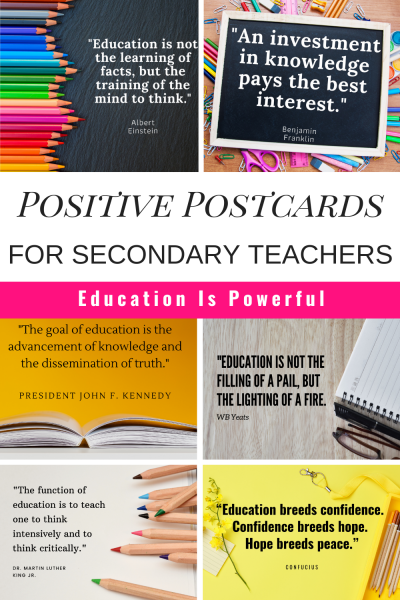You can dramatically change the behavior of your hardest students using the two by ten strategy by spending just two minutes a day for ten days talking to students about what interests them.
I started my career in education teaching in an alternative setting. 95% of my students were youth in the custody of the state. At the time we were the step between the youth correctional facility and being able to go home. Most students lived with proctor (foster) parents and group homes. If they were successful with us, they could be released to go home. Though this wasn’t in an “institutional” facility and we were a public school within our district.
Building Positive Relationships with Students
The school philosophy centered around building positive relationships with students. Many of these students did not have positive relationships with teachers or adults in authority. It became our mission to change that belief and experience so that we could even have a chance of helping them change the direction of their life.
We taught long classes, around 80 minutes each. My principal would say – I would rather you had 60 good minutes with 20 minutes of chatting than 80 minutes of struggle. Looking back, I now realize that he was giving me permission to take the time to build relationships with students.
And believe me – I leaned on those relationships. One student was having a rough day and the substitute called me. I was able to talk the student down, make a plan for what he would (and wouldn’t) do that day, and de-escalate a situation that could have been much worse – all because of the relationship I had with that student.
But how does a traditional teacher find time to do this? We certainly can’t (and shouldn’t) take 20 minutes out of every class period to build relationships with students.
Enter the two by ten (2×10) strategy.
The Two by Ten Strategy
Ginsbery & Wlodkowski, in their 2004 book Creating Highly Motivated Classrooms for All Students, describe the two by ten strategy as this: “the staff member has a two-minute conversation with a student for 10 consecutive days, talking nothing about school or work. Once the 10 consecutive days have passed, the two individuals can talk about anything else they want, including school performance.” (Fisher & Frey, Engagement by Design. 2018. p. 20-21).
Now, to be honest – this is HARD! Two whole minutes for ten days straight. (And I don’t know that I was ever able to do it that consistently.)
How to Implement the Two by Ten Strategy
Once I moved into more traditional classrooms, I would say that on average I would have 2-3 students who would fall into the category of being students I worried about or students who had severe behavior issues. These were students that I desperately needed to build relationships with.
Could I carve out 2 minutes a day to build a relationship with them? Definitely. I could chat with them at the beginning or end of class. Maybe pull them aside during the starter or independent work time.
I have used this strategy with my own students many times. For me, the cue would be that I was getting frustrated or upset with students. But the minute I dreaded seeing a student walk into my room – that was when I needed to work on my relationship with them.
One of the hardest things about the two by ten strategy is not talking about school. Like at all. I mean, that’s what I do – I’m a teacher. I talk about school. So, it really made me dig deep, ask good questions, and really get to know the student. I had to remember what they were interested in or talked about. I started paying attention to their music, their t-shirts, the things they mentioned in class. Anything. Anything to have a topic to bring up with them later.
And do you know what it did? It reminded me that these kids are kids. They are more than the bad behavior I saw in my class.
And sometimes, that is exactly what I needed to remember.
What I Learned
I learned that one student worked nights to help support his family because his mom was a single mom and they didn’t know where their dad was. So the next time he slept in class or was rude to me, I knew it was because he probably got very little sleep and was worrying about money. Knowing that changed my perspective on his behavior and my underlining attitude towards him. I spoke differently with that student and in turn, he spoke differently to me. Did it solve the problem? No. He still had to work. He was still tired. But we didn’t have any negative exchanges.
If we go back to my students who were at the alternative school, they had such negative experiences with adults in authority. By using this strategy and building relationships with them I became an advocate and an ally to them, rather than an authority figure exerting my will upon them.
They trusted me and they respected me because I showed I cared about them and respected who they were – I wasn’t only concerned with good behavior in class. I showed them that I was interested in what they were interested in.
Why does this matter?
Fisher and Frey say in Engagement by Design (2018) that “without feeling accepted or safe, it is impossible [for students] to give their full attention to learning” (p. 23).
Ultimately, as a teacher, I want students to learn. I want them to achieve their dreams and goals in life and I believe education is the path to achieving that. But if students in my room don’t feel accepted, safe, repeated, and trusted – how can they do that to their full capacity?
Some people may say that they always look for understanding the why behind a student’s behavior. And I say, good for you! But in reality, I have class sizes of 38-42 on average and I don’t always get to those thoughts because I am overwhelmed by it all.
So, carve out a little bit of time each day, choose a student you want to build a relationship with, and test it out. You’ll be surprised at what a difference it makes.
Links for More Information:




